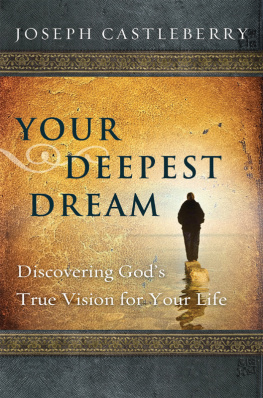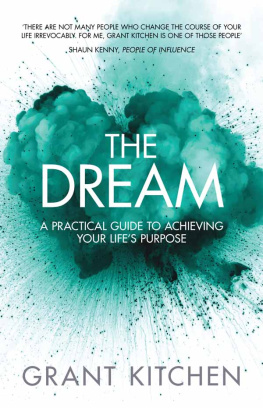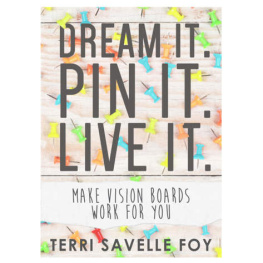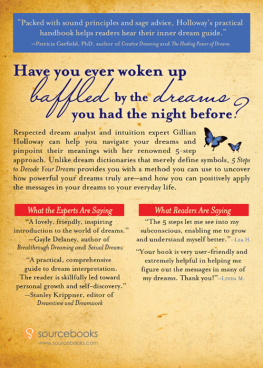Table of Contents
2013 Richard Newton and Ciprian Adrian Rusen
Registered office
Capstone Publishing Ltd. (A Wiley Company), John Wiley and Sons Ltd, The Atrium, Southern Gate, Chichester, West Sussex, PO19 8SQ, United Kingdom For details of our global editorial offices, for customer services and for information about how to apply for permission to reuse the copyright material in this book please see our website at www.wiley.com.
The right of the authors to be identified as the authors of this work has been asserted in accordance with the Copyright, Designs and Patents Act 1988.
All rights reserved. No part of this publication may be reproduced, stored in a retrieval system, or transmitted, in any form or by any means, electronic, mechanical, photocopying, recording or otherwise, except as permitted by the UK Copyright, Designs and Patents Act 1988, without the prior permission of the publisher.
Wiley publishes in a variety of print and electronic formats and by print-on-demand. Some material included with standard print versions of this book may not be included in e-books or in print-on-demand. If this book refers to media such as a CD or DVD that is not included in the version you purchased, you may download this material at http://booksupport.wiley.com. For more information about Wiley products, visit www.wiley.com.
Designations used by companies to distinguish their products are often claimed as trademarks. All brand names and product names used in this book and on its cover are trade names, service marks, trademark or registered trademarks of their respective owners. The publisher and the book are not associated with any product or vendor mentioned in this book. None of the companies referenced within the book have endorsed the book.
Limit of Liability/Disclaimer of Warranty: While the publisher and author have used their best efforts in preparing this book, they make no representations or warranties with the respect to the accuracy or completeness of the contents of this book and specifically disclaim any implied warranties of merchantability or fitness for a particular purpose. It is sold on the understanding that the publisher is not engaged in rendering professional services and neither the publisher nor the author shall be liable for damages arising herefrom. If professional advice or other expert assistance is required, the services of a competent professional should be sought.
Library of Congress Cataloging-in-Publication Data to follow A catalogue record for this book is available from the British Library.
ISBN 978-0-857-08456-9 (paperback) ISBN 978-0-857-08455-2 (ebk) ISBN 978-0-857-08454-5 (ebk) ISBN 978-0-857-08453-8 (ebk) Illustrations by Laura Dumitru
To those who dare to follow their dreams, no matter how hard they are.

Why Read this Book: What's It about and How will It Help You?
Here is a simple model for achieving dreams. Maybe you have a dream, but do not know how to achieve it, or maybe you want help or just a bit of structure to start living your dream. Either way, this book is for you.
The approach in this book works. It is based on well tested principles and approaches used all over the world by project managers and other professionals whose job it is to make things happen. We have taken the most useful tools, advice and experiences and distilled them into a concise, practical guide for everyone. There is some explicit theory in this book, but much more is hidden below the surface.
The book is a tool. It can be referred to repeatedly as you make your way towards your dreams. We like the fact you dream, but we want to take you further from dreaming it, through doing it, to living it.
The approach in this book has been used in real life. The book includes real-life examples and dreams of people who have applied the steps as they are described. Four normal people had the courage to share their dreams with us, apply our recommendations and share their learning and experience. Their personal adventures are one of the most useful parts of the book.
The advice is easy to understand and apply. This is not a long book, but it includes the most important principles you need, the most important questions to ask yourself, and the most important steps to follow in an easy to use format.
Reading this Book
This book is written as a guide for anyone who dreams and really wants their dreams to become reality. It is a workbook that will act as your mentor as you go through the process of achieving your dream. The guidance is based on the 9 step approach we have designed based on our experiences, to help everyone achieve their dreams.
Each of the 9 steps has a chapter which we suggest you read through and then work on your dream. There is an important word in the last sentence work. Because this book does not pretend there is some magic that can make you achieve your dreams by belief alone. Achieving your dream takes effort, but it is the sort of effort that everyone can do if they go about it in the right way. This book shows you the right way. It is realistic, achievable and friendly.
Of course, you can read the book end-to-end in one sitting. It's not an overly long book. However, we suggest you don't think of it like a novel to be experienced, but treat it as a tool. And like a tool, you should read it as you progress and when you need to use it. If you are the sort of person who likes to be really thorough, and wants to get the most from this book, we suggest you do the following:
Go through the book quickly once scanning all the chapters so you understand the sequence of events we are going to take you through.
Work with the book on your dream. Take each chapter, one at a time, and only move onto the next chapter when you know you have completed the work required. There is a section in each chapter called How will I know I've done well, which is there to help you understand when it is time to move onto the next chapter.
Use the book again and again as a reference source when you work on other dreams in future. At the end of each chapter is a very short section titled Questions to ask yourself. These questions provide a way of checking you understand the advice in the chapter. They are also a quick reference to use once you are familiar with the book, that you can come back to again and again.
The chapters are in a deliberate order starting with working out what your dream really is, all the way through to what to do once you have achieved it.
The chapters have two main parts. The first part is our advice: what we suggest you do at each stage of your dream. After this are the case studies. These are the stories of four real people, following their actual dreams, using the approach that we describe in this book. We worked with them whilst we wrote the book. We think of these people as our heroes. We introduce our heroes in the next section of this book. To give you a flavour of the dreams:
- One concerns getting a doctoral degree which involves a research project, getting people involved, finding funding and many other challenges.
- The next concerns someone who wants to become a singer, for the best of all reasons: she loves singing!
- The final dream brings two people together who want to start their own business.
These are the real dreams of real people. People like us, people like you, people who had a dream, and who have achieved it.










